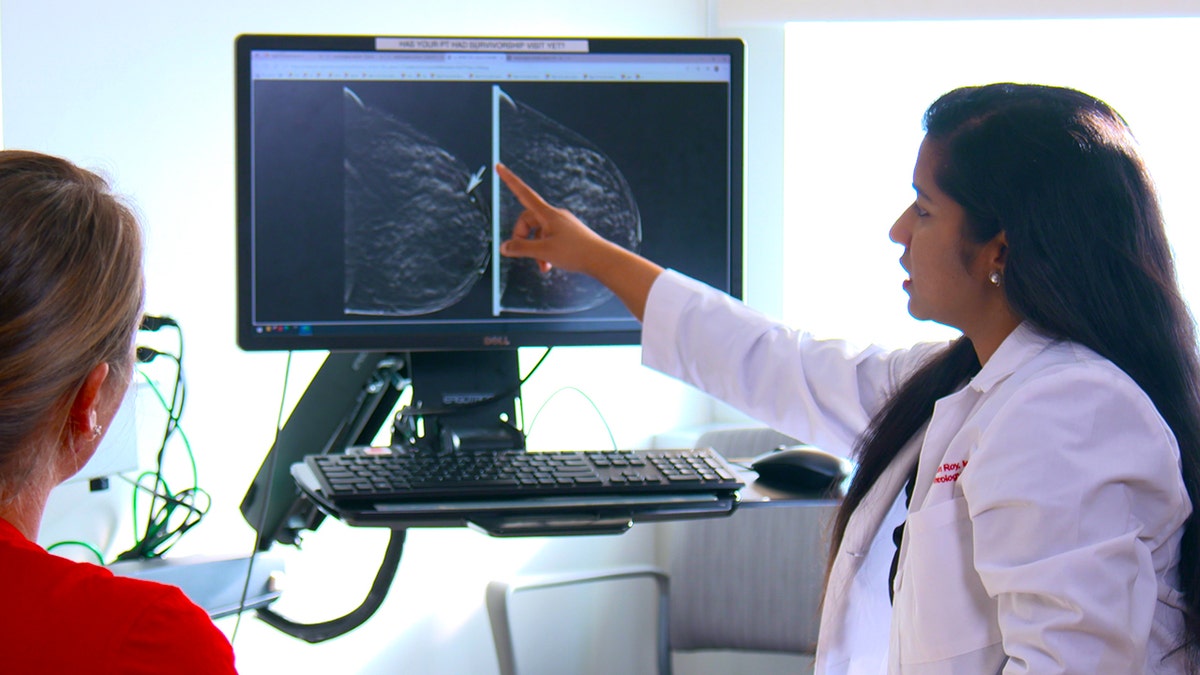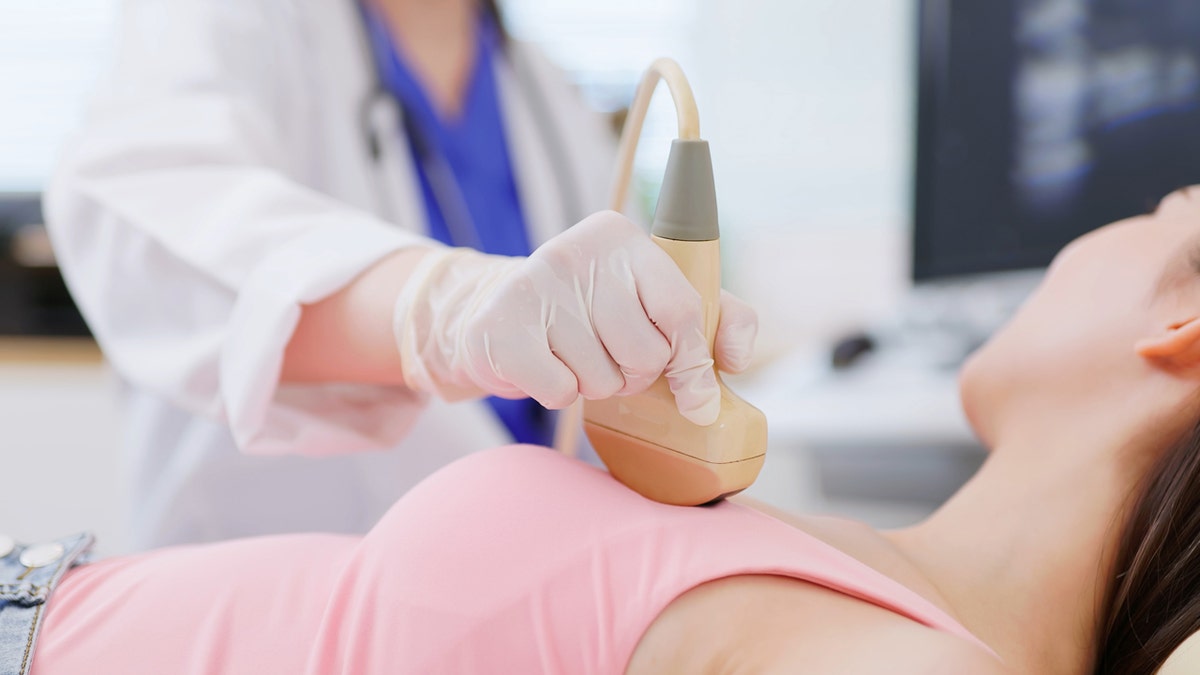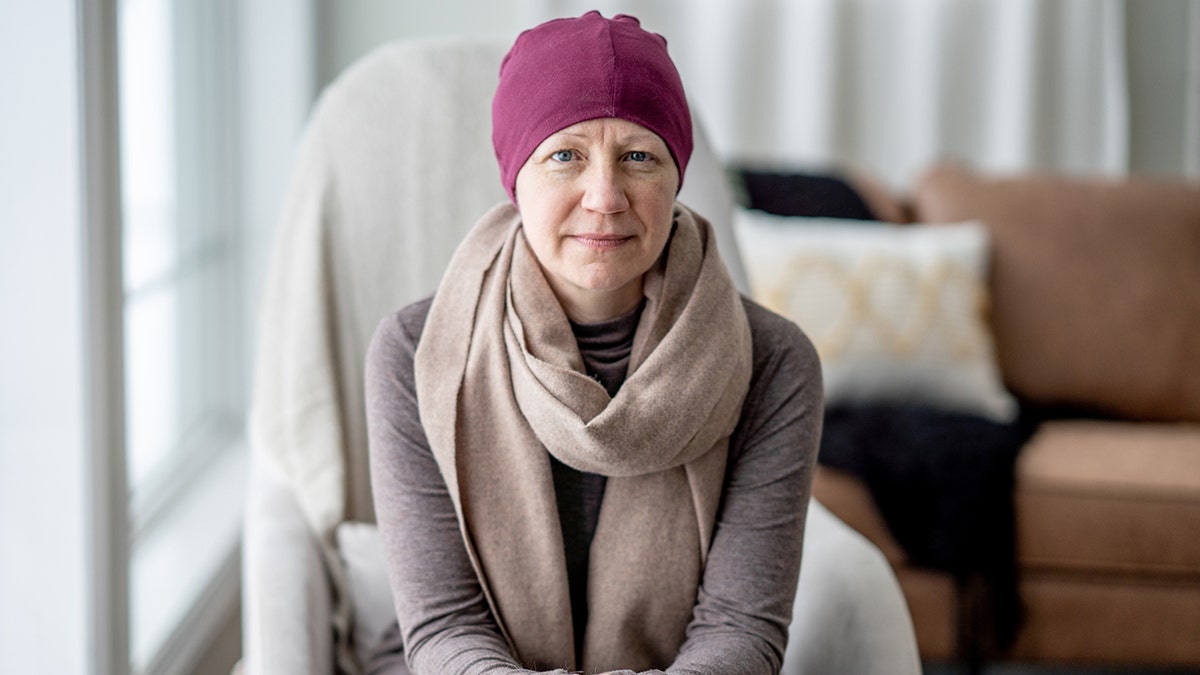Listen to the article
NEW You can now listen to Fox News short articles!
Expert system is making its mark on the future of cancer care.
Among the most recent applications for the innovation is determining hard-to-detect breast cancer.
Scientists at Ohio State University’s Comprehensive Cancer Center (OSUCCC)– Arthur G. James Cancer Healthcare Facility and Richard J. Solove Research study Institute are utilizing AI in an initial setting to anticipate which clients might establish lobular breast cancer.
LADY BEATS FATAL BRAIN CANCER WITH SPECULATIVE STEM CELL TREATMENT: ‘REALLY IMPRESSING’
What is lobular breast cancer?
Breast cancer is the most typical cancer in females and the second-leading reason for cancer-related death in the nation.
Lobular breast cancer, which is aggressive and difficult to identify, represents in between 10% and 15% of breast cancer detects in the U.S., information programs.
This is how lobular breast cancer can appear on a mammogram. Arya Roy, M.D., kept in mind the cloudiness in the imaging, which would trigger her to suggest extra scans. ( The Ohio State University)
Rather of a clump of cells that form a growth, lobular cancer grows as a long chain of cells, so it appears as a “subtle density” on mammograms. This suggests it can be hard to find till it has actually infected other parts of the body, according to OSU.
This type of the illness likewise risks of returning even after ten years of the client being cancer-free.
” We urgently require much better tools … that can anticipate which clients are really at high danger.”
In Addition, about 40% of females over 40 years of ages have thick breast tissue, according to the Society of Breast Imaging, which can position an additional detection obstacle and a greater danger of establishing breast cancer.
Although intrusive lobular cancer grows, spreads and reacts to treatment in a different way than the more typical intrusive ductal cancer, oncologists still follow the very same standards for both illness, according to lead scientist Dr. Arya Roy, breast cancer expert at OSUCCC– James.
” The genomic tests we presently utilize typically provide uncertain or conflicting outcomes for lobular cancer, that makes it harder for oncologists to pick the very best treatment,” she mentioned in journalism release. “We urgently require much better tools– particular to lobular cancer– that can anticipate which clients are really at high danger.”
Cancer-fighting tech
Roy restated how hard it is to recognize lobular breast cancer from imaging.
” At the very same time, it is really difficult to recognize the clients who are at greater danger of reoccurrence after treatments,” she informed Fox News Digital. “So here is where we are utilizing expert system strategies to recognize the clients who are at danger of this cancer returning.”

Revealed analyzing a breast scan, Arya Roy, M.D., is looking into a kind of cancer that’s typically missed out on in routine screenings. She’s utilizing information from real lobular breast cancer cases to train expert system to enhance early detection. ( The Ohio State University)
By integrating AI designs with digital pathology images, physicians can identify biomarkers and other indications in high-risk cancer clients. Together with clients’ medical information, these findings are utilized to develop a scoring system that anticipates the probability of cancer reoccurrence over the next years, the scientists stated.
The AI tool is presently in advancement, with medical trials and a financed research study on the horizon.
CLICK ON THIS LINK TO REGISTER FOR OUR HEALTH NEWSLETTER
” We hope that as soon as we totally establish this expert system tool, which will assist us recognize the clients who are at danger of reoccurrence, we will have the ability to utilize it for all lobular breast cancer clients,” Roy went on.
” If we understand that a client has a 10% increased opportunity of this cancer returning in 5 years, then we can keep that client in close security.”

The research study scientist motivates females to go over with their doctors whether extra imaging is suitable for them. ( iStock)
Oncologists can likewise utilize other imaging strategies to make sure that no cancer reoccurrence is missed out on in these higher-risk clients, Roy included, keeping in mind that this brand-new AI-driven approach might “promise to a great deal of clients.”
TEST YOURSELF WITH OUR LATEST WAY OF LIFE TEST
The oncologist motivates females to go over with their physicians about whether extra imaging is suitable for them.
Prospective restrictions
Dr. Harvey Castro, an ER doctor and AI professional in Texas, was not associated with OSU’s research study however talked about the findings to Fox News Digital.
” Before these tools go into regular care, we should guarantee they’re checked on real-world, varied populations.”
” The Ohio State research study marks crucial development in utilizing AI to identify lobular breast cancer, an infamously hard subtype, however it likewise highlights the obstructions that still keep AI from completely matching real-world intricacy,” he stated.
Among the greatest problems is training AI on old information, the medical professional kept in mind. “Medication progresses rapidly, and algorithms developed on the other day’s images might miss out on today’s patterns, which is what I call temporal drift.”

The AI tool is presently in advancement, with medical trials and a financed research study on the horizon. ( iStock)
Castro warned that numerous systems “carry out magnificently” in a laboratory, however might stumble when checked in brand-new medical facilities or client populations.
” Thick breast tissue stays AI’s Achilles heel,” he kept in mind. “The very same density that conceals growths from radiologists can puzzle algorithms, too, particularly throughout racial and age.”
CLICK ON THIS LINK FOR MORE HEALTH STORIES
AI will not change radiologists, according to Castro– rather, it will redefine how they work.
” However before these tools go into regular care, we should guarantee they’re checked on real-world, varied populations, not simply ideal laboratory information.”
Source: Fox News.
Fact Checker
Verify the accuracy of this article using AI-powered analysis and real-time sources.



